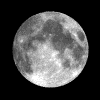Department of Physics and Astronomy: Publications and Other Research

Edward Schmidt Publications
Document Type
Article
Date of this Version
April 1984
Abstract
In previous studies of Cepheid chromospheres with the IUE, we found that the chromospheric emission is strongly dependent on the period of the star and varies substantially through the cycle. For the shortest period star in our sample, δ Cep, we were able to detect little significant chromospheric emission in the short wavelength region, and we were only able to detect transition region emission in the longest period star, 1 Car. However, the upper limits on these emissions were slightly above expected flux levels for nonvariable stars. To detect them or place lower and physically more interesting limits on the fluxes we have obtained longer exposures at several critical phases for three of the stars. We have succeeded in detecting Ο I λ1305 in δ Cep, but it is substantially weaker than in the other Cepheids. We have also succeeded in detecting transition region lines at one phase of β Dor and one phase of ζ Gem and in placing much lower limits on the emission at other phases. The strength when detected is similar to nonvariables, but at other phases the upper limits indicate smaller fluxes than observed in nonvariable stars.


Comments
Published in The Astrophysical Journal ApJ 279, 215, (1984). Published by the University of Chicago Press; copyright © 1984 American Astronomical Society; reproduced by permission of the AAS. http://www.journals.uchicago.edu/ApJ/front.html